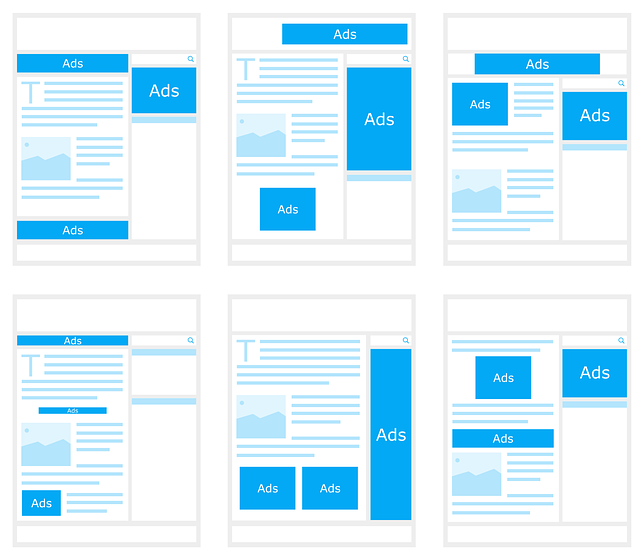Are you tired of sending out email after email, hoping to strike gold with your copywriting? Well, my friend, I have a secret weapon for you – A/B testing. Ah, yes, the magical process of pitting two versions of your email copy against each other to see which one comes out on top. It’s like a gladiator battle for words, where only the strongest survive.
In this article, we’re going to take a deep dive into the world of A/B testing for email copywriting. We’ll show you how to understand the basics, define your testing goals, and create variations that will make your subscribers sit up and take notice.
And once you’ve split your audience and sent those test emails, we’ll teach you how to analyze the results like a detective on the hunt for the perfect email formula.
So, grab your pen and parchment, my friend, because we’re about to embark on a journey that will revolutionize your email game. Get ready to implement the learnings, iterate, and watch as your emails become the stuff of legends. It’s time to unleash the power of A/B testing for email copywriting. Let the battle begin!
Key Takeaways
- A/B testing is an essential tool for optimizing email copywriting.
- Testing one element at a time and setting clear testing goals are crucial for accurate measurement and success.
- Key metrics to improve include open rates and click-through rates.
- Creating variations of email copy, testing subject lines, call-to-action buttons, and personalization can significantly enhance engagement and conversion rates.
Understand the Basics of A/B Testing
Let’s dive into the basics of A/B testing, where you can uncover the secrets to optimizing your email copy and captivating your audience.
A/B testing, also known as split testing, is a powerful tool that allows you to compare two versions of your email copy and measure their performance. By following A/B testing best practices, you can gain valuable insights into what resonates with your audience and optimize your email copy accordingly.
It’s crucial to test one element at a time, such as subject lines, call-to-action buttons, or body copy, to accurately measure email performance. With A/B testing, you can make data-driven decisions and continually improve your email copy to engage your subscribers.
So, now that you understand the basics of A/B testing, let’s define your testing goals and delve deeper into the world of email copy optimization.
Define Your Testing Goals
To clearly define your testing goals, start by outlining the specific outcomes you want to achieve. Setting clear objectives will help you stay focused and measure the success of your A/B testing efforts.
Analyzing data and making data-driven decisions is key to improving your email copywriting. Here are four important steps to consider when defining your testing goals:
- Determine the key metrics you want to improve, such as open rates or click-through rates.
- Identify the specific audience segments you want to target with your email copy.
- Set realistic goals for improvement based on your current performance.
- Consider the impact of your testing goals on your overall email marketing strategy.
By defining your testing goals, you can create variations of email copy that are tailored to your specific objectives. This will allow you to optimize your email campaigns and drive better results.
Create Variations of Email Copy
When it comes to creating variations of your email copy, the key is to test different elements to see what works best.
Start by experimenting with subject lines, testing different lengths, tones, and keywords to grab the reader’s attention.
Next, focus on the call-to-action, trying out different wording, colors, and placement to see what drives the most engagement.
Lastly, don’t forget about personalization – test different ways to personalize your emails, whether it’s using the recipient’s name or tailoring the content to their specific interests.
By testing these elements, you can optimize your email copy and increase your chances of success.
Develop different versions of your email copy
Creating multiple versions of your email copy can increase click-through rates by up to 30%. To generate alternative versions, start by optimizing your messaging.
Craft different variations that speak to different segments of your audience, addressing their pain points and offering tailored solutions. Experiment with different writing styles, tones, and lengths to see what resonates best.
Test different elements such as subject lines, call-to-action, and personalization to find the winning combination. A compelling subject line can entice recipients to open your email, while a well-crafted call-to-action can prompt them to take the desired action. Personalization adds a touch of individuality, making your email feel more relevant and engaging.
By developing different versions of your email copy, you can refine your message and increase the chances of success.
Test different elements such as subject lines, call-to-action, and personalization
Try experimenting with different subject lines, call-to-action statements, and personalization techniques to see what captures your audience’s attention and prompts them to take action. Here are four key elements to consider when conducting your A/B tests for email copy:
-
Subject line optimization: Craft catchy and compelling subject lines that entice your audience to open your email. Test different lengths, tones, and keywords to see what resonates best.
-
Measuring engagement rates: Track metrics like open rates, click-through rates, and conversion rates to gauge the effectiveness of your email copy variations. Use this data to inform future optimizations.
-
Call-to-action testing: Experiment with different wording, placement, and design of your call-to-action buttons or links. Test variations that create a sense of urgency, highlight benefits, or use persuasive language.
-
Personalization techniques: Tailor your emails to individual recipients by using their name, past purchase history, or location. Test different levels of personalization to see if it increases engagement and conversion rates.
By testing these elements, you can gain valuable insights into what resonates with your audience and optimize your email copy accordingly. In the next section, we’ll explore how to split your audience and send test emails.
Split Your Audience and Send Test Emails
To optimize the effectiveness of your email campaign, it’s crucial to divide your audience and send test emails. A/B testing is an effective strategy for measuring email engagement and identifying what resonates with your subscribers. By splitting your audience into two or more groups and sending different versions of your email to each group, you can analyze which version performs better. This allows you to make data-driven decisions about your email copywriting and refine your messaging to maximize engagement and conversions.
To illustrate the power of split testing, here is a table showcasing the results of a recent email campaign:
| Test Group | Subject Line | Call-to-Action | Personalization | Email Engagement |
|---|---|---|---|---|
| Group A | "Limited Time Offer Inside!" | "Shop Now" | Yes | 22% |
| Group B | "Don’t Miss Out!" | "Get Your Deal" | No | 15% |
As you can see, the version sent to Group A with a personalized subject line and clear call-to-action achieved a higher email engagement rate of 22%. This valuable data can inform your future email campaigns and help you craft more compelling copy to drive results.
Now, let’s move on to analyzing and comparing the results to further optimize your email marketing strategy.
Analyze and Compare Results
Now that you’ve split your audience and sent test emails, it’s time to analyze and compare the results to enhance your email marketing strategy. Here’s what you need to do:
-
Analyze data: Dive deep into the metrics and statistics gathered from your test emails. Look at open rates, click-through rates, and conversion rates to understand how each variant performed.
-
Evaluate performance: Compare the performance of different email versions and identify which one resonated better with your audience. Look for patterns and trends to gain insights into what elements of your copywriting worked and what needs improvement.
-
Implement learnings and iterate: Armed with your analysis, make data-driven decisions to optimize future email campaigns. Apply the lessons learned from your A/B testing to refine your copy, subject lines, and call-to-action buttons for even better results.
By analyzing the data and evaluating the performance of your test emails, you can make informed decisions on how to improve your email marketing strategy. Now, let’s move on to the next step of implementing learnings and iterating.
Implement Learnings and Iterate
Let’s take the lessons learned from analyzing the data and evaluating the performance of your test emails and put them into action to supercharge your email marketing strategy.
Now that you have a clear understanding of what worked and what didn’t, it’s time to implement those learnings and iterate on your email copywriting. Continuous improvement is key in the world of email marketing, and by using data-driven decision making, you can optimize your emails for even better results.
Start by incorporating the winning elements from your A/B tests into your future email campaigns. Whether it’s a catchy subject line or a persuasive call-to-action, use what you know works. But don’t stop there. Keep experimenting and testing new ideas to ensure your email copy is always evolving and improving.
With a commitment to data-driven decision making, your email marketing strategy will reach new heights of success.
Frequently Asked Questions
How do I determine the sample size needed for my A/B test?
To determine the sample size for your A/B test, you need to consider two important factors. First, you should determine statistical significance. This will help you determine if the results of your test are reliable and not due to chance. Second, you should calculate power analysis. Power analysis helps you determine the minimum sample size needed to detect a meaningful difference between your control and experimental groups. By carefully considering these factors, you can ensure the accuracy and effectiveness of your A/B test.
What are some common mistakes to avoid when conducting an A/B test for email copy?
When conducting an A/B test for email copy, it’s crucial to avoid common mistakes.
Firstly, make sure that your test samples are large enough to generate reliable results.
Secondly, don’t make the mistake of only focusing on open rates or click-through rates; analyze and interpret the overall impact on conversion rates too.
Lastly, be careful not to draw hasty conclusions; always run tests for a sufficient duration to account for any seasonality or variations in audience behavior.
By avoiding these mistakes, you can improve your email copywriting strategy.
Can I conduct A/B testing for different elements in an email, such as subject line, call-to-action button, and content?
Yes, you can conduct A/B testing for different elements in an email, such as the subject line, call-to-action button, and content. Email design plays a crucial role in capturing your audience’s attention and driving conversions. By utilizing A/B testing strategies, you can experiment with different variations of these elements to determine what resonates best with your audience.
Remember, "don’t put all your eggs in one basket" – test multiple variations to maximize your email’s effectiveness and optimize your results.
Is it necessary to run A/B tests for every email campaign, or are there specific cases where it may not be beneficial?
A/B testing is a powerful tool for optimizing email campaigns, but it may not always be necessary.
Personalization has a significant impact on email open rates, so if you have a highly targeted and personalized campaign, A/B testing may not provide much additional value.
Similarly, if your email relies heavily on visuals for its effectiveness, A/B testing may not be as useful since visual elements are harder to test.
However, for most email campaigns, A/B testing is still highly beneficial for refining subject lines, call-to-action buttons, and content.
How long should I wait before concluding the results of an A/B test and implementing the learnings?
When it comes to A/B testing, the importance of statistical significance cannot be overstated. It ensures that the results you see are not due to chance, but rather a true reflection of your audience’s preferences.
However, timing also plays a crucial role in A/B test results. It’s recommended to wait until you have a substantial sample size before drawing conclusions. Rushing the process can lead to inaccurate findings and potentially impact the effectiveness of your email copy.
Conclusion
So there you have it! You’ve taken a deep dive into the world of A/B testing for email copywriting. You’ve learned the basics, defined your goals, created variations, split your audience, and analyzed the results.
Now it’s time to implement those learnings and iterate. Remember, the key to successful A/B testing is to embrace the uncertainty and have fun with it. Who knew that playing with words could have such a big impact?
Happy testing, and may your email copy always be engaging and irresistible.









